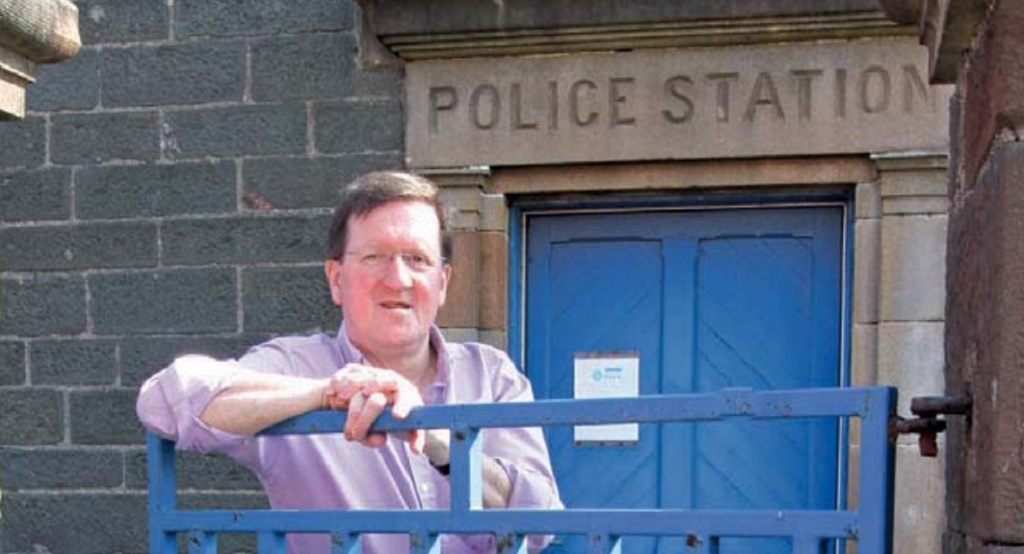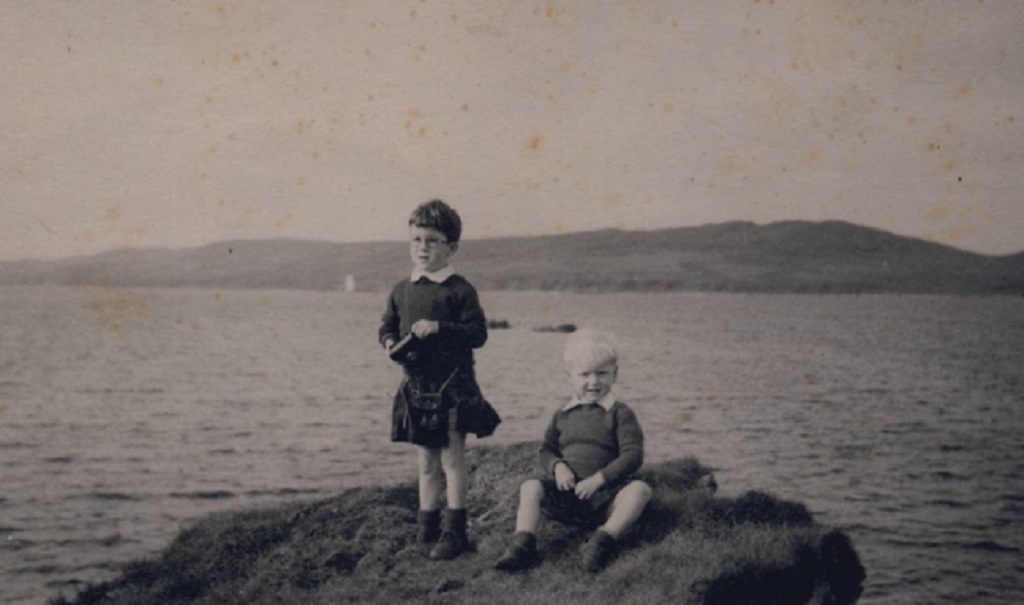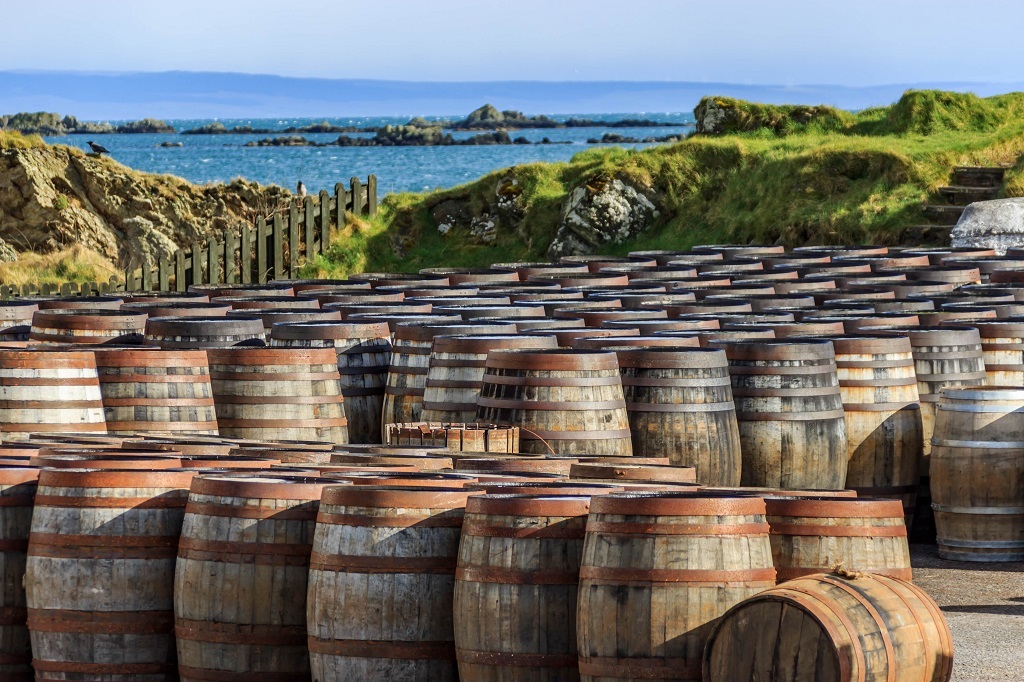
Postcards from the edge – the life of George Robertson
An idyllic childhood on Islay gave George Robertson the best start in life – and keeps him coming back to his island refuge.
Rt Hon Lord Robertson of Port Ellen is one of the 16 Knights of the Thistle, Scotland’s oldest and highest order of chivalry whose members are personally chosen by the Queen.
A Labour MP for 20 years, he has been Secretary of State for Defence and served as the tenth Secretary General of NATO.
Islay was an idyllic place to grow up. Wide open spaces, little traffic, insignificant crime, beaches that stretched forever and the friendliest people you could ever meet. We were in our element – and in constant trouble.
Like my brother Nigel and my sister Rosemary, I was born in the police station in Port Ellen, one of Islay’s two ferry ports. It was a birthplace forever fated to be a talking point, but it was less controversial than it sounds. My father, not long out of wartime RAF service, was the village constable.
So we were the policeman’s kids. That got us attention but not the predicted behaviour. Small though we were, we revelled in mischief. The Port Ellen pier was the centre of our world. Built then on steel spars and in deep water, with the world underneath it our highly dangerous playground. We fished for tiny peuchkie and crabs; we chased and jousted without care, even though none of us could swim.
On the rocks around the pier we would climb what we thought of as cliffs (in truth just steep rocks) and risked injury with every game. Once Nigel jumped on to a supporting wall and accidentally hit a young girl, throwing her to the rocks below. It is a memory that still brings shivers, but the fall was not far and the injury only slight.
Our mother, the wife of local law and order, would pay visits to prominent locals. Her cherubic offspring would accompany her and (out of pure curiosity, of course) turn on water-butt taps and oil-tank valves, leaving devastation behind. It sounds like innocent mischief now but I bet it was irritating at the time.
Islay was then, and still is, dominated by whisky. Most islanders were employed in agriculture or the distilleries, and alcohol was a big thing. The distilleries then were forbidding workplaces, off-limits to the public and, thanks to their deeply competitive nature, both secretive and mysterious.

George Robertson was born at the police station on Islay (Photo: Roy Summers)
Today they are wide open, their glossy visitor centres veritable cathedrals to the amber liquid. They are vibrant, humming with life and vitality, and even if they employ a fraction of the number they did when I was young, the eight Islay distilleries contribute vast revenues to the Chancellor of the Exchequer.
Their names resound around the world, the labels illuminating bar galleys in every capital city on the planet. Lagavulin, Laphroaig, Bowmore, Bruichladdich, Ardbeg, Caol Ila, Bunnahabhain, and the new micro-addition Kilchoman – all of them prized single malts savoured by sophisticated palates in a hundred countries.
I started my education in Port Ellen Primary School, in a building which is now used as the local shellfish factory, and which each day sends its crabs, scallops, langoustines and prawns to posh restaurants in Spain and France. In the days when I was starting to learn to read with my teacher Marion Heads, the prawns were seen as sea garbage and thrown away by fishermen. Now they are prized and expensive and a serious source of employment to Port Ellen’s sea hunters.
The present local primary school, headed by Maureen MacDonald, still turns out highly educated and motivated youngsters and the school’s string of awards is testimony to how a small rural school can be the beating heart of a community. And it has impressive alumni too. No fewer than two presidents of the Royal Society of Edinburgh came out of this school.
Professor Sir William Stewart, Prime Minister Margaret Thatcher’s chief scientist, was the son of the school janitor, and Professor Sir Alistair Currie, professor of pathology at Edinburgh University, was the local baker’s son. And way before all of us was Alexander McDougall from just outside Port Ellen, who was a major general in the American Continental Army which ripped the United States from the British Colonies. A ship’s captain, distinguished soldier, member of Congress, one of the first US Government ministers and founder president of the Bank of New York, he was a remarkable example of Islay’s native sons.
When I was six, my father was promoted to the apparently huge metropolis of Dunoon (a traumatic time in my young life), but thanks to the kindness and hospitality of the Aitken family we came back to Islay every summer.

The young George (standing) with his brother Nigel, in 1950. Carraig Fhada lighthouse can just be seen on the left (Photo: George Robertson)
There we continued that wonderful escapism that is still enjoyed by Islay youngsters. The sea (unlike us, kids today can learn to swim in the McTaggart swimming pool), the beaches, the rolling green acres with no ‘keep off’ signs, the million-acre skies, the boats – all the fun that brings people and their children (including ours and then their own) back year after year.
The beaches of Islay are not ordinary. By any standard, they are spectacular. Saligo in the north-west is paradise for children and photographers alike. Lossit Bay, Kilnaughton, the Singing Sands, Machir Bay and the tersely but accurately named Big Strand are all of them a playground for fantasies and where, if there are two other families with you on miles of sand, that’s a crowd.
As children we loved them in any weather, but Islay is on the Gulf Stream and palm trees are common. Such exotic plants also thrive on neighbouring Jura, where we would visit a relation who was a gamekeeper on Sir William Lithgow’s estate.
And then there are the birds. Maybe as children we didn’t really appreciate the wealth of birds around us, although we certainly noticed them; who could not? Hundreds of species have a home on Islay – from the rarest, the golden eagle and the chough, to the hundreds of thousands of geese who rest here annually on their global travels. It was only two years ago that I fulfilled that childhood dream of seeing – and glory of glories, photographing – a golden eagle off the Mull of Oa.
So whisky, fishing, birds – what a variety – and in addition there’s history. We often visited Finlaggan Loch as kids. We were told that on the small islands on this anonymous inland loch there had been the headquarters of the Lords of the Isles, the most famous of whom had been Somerled, who in the 11th century drove out the marauding Vikings from the west of Scotland.

There’s fare more to Islay than just its famous whisky
We would look at this peaceful piece of water and try to conjure up images of days gone by. Now these islands have been lovingly excavated, a causeway built, artefacts displayed and a new visitor centre tells the dramatic tales of what once happened there.
One other historic Islay monument is at the very tip of a usually windswept Mull of Oa. Scarily placed above giant cliffs is the memorial to the American troopship Tuscania, which was torpedoed in 1918 with huge loss of life.
My maternal grandfather, the police sergeant based in Bowmore, had the huge and painful job of handling that disaster and the other tragic sinking, of the Otranto, in the same year. As children we were shown with reverence the MBE he received for his back-breaking – and heartbreaking – work.
Today Islay, where we still have a home, is vibrant and very alive. Its magic still casts a spell on those who come and then come back and back. Its Gaelic choir and pipe band carry the name proudly and successfully throughout Scotland. It has a superb golf course (and a linked hotel now looking for a new owner) and a few world-class small hotels (and I know what that means).
It also has some outstanding eating places and other hostelries offer grand hospitality, as do a multiplicity of B&Bs. The lamb, beef and shellfish are mouthwatering and they all combine to create an enticing menu of attractions for visitors, including the many yachties attracted to the pontoons at Port Ellen and Bowmore.
Small wonder the island’s festivals – Cantalina, whisky, jazz, book and Mod (music) – get bigger every year.
With two Calmac ferries, a regular plane service and the warmest welcome you will ever experience in your life, it’s time you too came to Islay. You will never regret it – or forget it.
(This feature was originally published in 2012)
TAGS

